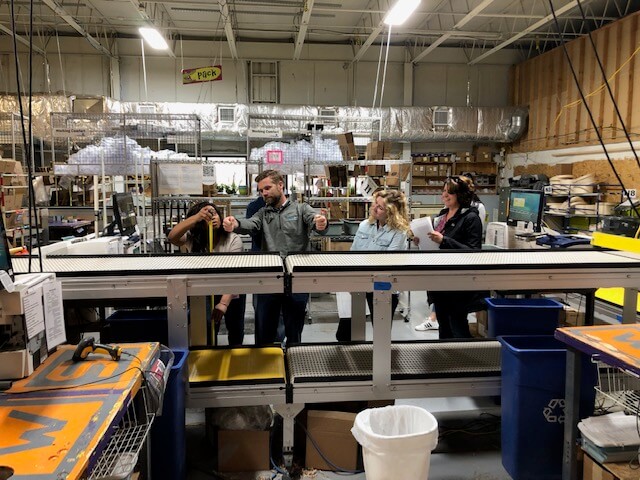Whether you have a well-established ergonomics process or are just starting a new ergonomics team, there are some common mistakes that limit your effectiveness. The good news is that these mistakes are easy to spot. Preventing or correcting them is also straightforward; however, the longer an ergonomics team has practiced one of these bad habits, the more communication and monitoring will be necessary to successfully change. We’ve put together a list of the four most common mistakes and tips for addressing each one.
Failing to recognize the operator as the expert on the job
This often results in failing to adequately identify the problems in the job and implementing solutions that aren’t as effective as they could be. An experienced operator has spent thousands of hours doing the job. They know things about it that no one else does. The only way to fully understand the process, as practiced, is to talk to the operator and have them describe it. Seek out information about variations in the process by asking questions like, “Are there times when this doesn’t run so smoothly?” Learn about the when and why of any steps that depart from the work instructions or standard work. If feasible, have the operator teach you how to do the job (or at least one important element of it), and then do it yourself, following their instructions. Tap their knowledge to identify less common tasks or situations that might present unique hazards. Consulting the operator as the job expert continues into the root cause analysis and solution identification phases. Their knowledge of the job combines with your knowledge of ergonomics to better isolate meaningful causes and effective solutions.
Insufficient prioritization
The overriding purpose of your ergonomics process is to manage, and therefore reduce, the risk of musculoskeletal disorders. In most cases, you have a small team and limited resources. Prioritization is the key to achieving your risk reduction goals. Prioritization happens at several levels:
- Which business areas, departments, and jobs the team will assess first.
- Which jobs the team will fix first. It is often useful for the team to have a focused list of priority jobs, like the top three, five or ten (depending on the size/resources of the team). Several factors may help determine this priority:
- Risk scores. Consider which jobs score higher, the frequency at which they occur, and if they serve a critical purpose to business operations. If a job scores higher but won’t be performed until months later, it may be beneficial to target lower scoring jobs that are crucial to current operations.
- Business plans. Is this an area that is expected to grow in volume or decrease in volume?
- Operations concerns. Workstations may have similar risk scores, but one of those stations might have production bottlenecks, higher defects rates, greater training time, or more turnover; selecting those jobs for improvement will have a greater overall impact on the business.
Which improvements the team will implement. Note the impact potential improvements will have, and how difficult they will be to implement. Use the risk priority matrix to compare impact versus difficulty:
- A-priority improvements are easy to implement and have high impact. They should be completed quickly.
- B-priority improvements are helpful but will not impact risk as much; the only reason to do them is to make the job a little easier, and operator support should be a strong driver.
- C-priority improvements are typically more expensive and should have at least a cursory cost benefit analysis to verify that money is spent in the best place possible.
- D-priority improvements are rarely worth the investment in either time or money.
Skipping the root cause analysis
is like ordering a sandwich with nothing on it. The root cause analysis reveals the cause of the actual problem, and when a fix does not address that problem, the wrong problem has been fixed and fails to reduce the risk. As an example, picture a drain grate seated in the ground. Every day, the operator pulls the grate out, which requires a visible effort and results in poor postures, even when using a drain hook. The grate weighs 20 pounds, so the engineer implements a new grate that weighs only 10 pounds. The same struggle is observed during the follow-up analysis, with no reduction in risk. When measured, the actual force required to remove the grate is 90 pounds. This indicates a problem with breaking the grate loose from its seated position, not the weight of the grate itself.
Limited follow-up
Improvements aren’t always as effective as they were projected to be; assuming reduction in risk without confirming it is recipe for disaster. A full follow-up analysis is necessary to both confirm whether the improvement is working, and to generate a new baseline for reprioritizing the job as part of the continuous improvement process. Be sure to obtain operator feedback on the improvement as well. If the improvement has not reduced risk, it must be redesigned and reimplemented. Following up also helps your team get better at projecting the benefits of improvements. It is the feedback loop that builds knowledge and experience on your team.
